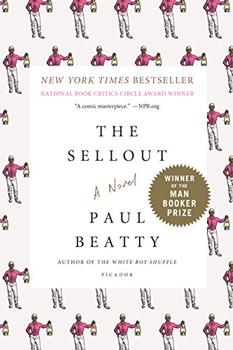Reading Guide Questions

Please be aware that this discussion guide will contain spoilers!
- If you were a Supreme Court justice hearing the case of Me v. The United States of America, how would you rule? What does Hampton Fiske, the narrator's attorney ("Don't say shit! Don't run! Don't resist arrest!"), ultimately prove about America's attempts to legislate life?
- Did you laugh or cry (or both) at the experiments run by F. K. Me, the narrator's psychologist/social scientist dad? Does your experience of the world support his three-stage Theory of Quintessential Blackness, summarized in Fiske's closing monologue?
- Does the concept of a ledger, designed to keep track of who owes a debt and who is entitled to receive a payment, accurately reflect the history of humanity in America? When Foy Cheshire calls the narrator a sellout on page 98, what is he saying was sold? Who were the buyers?
- Marpessa calls the narrator Bonbon, a lightweight nickname that emerged when he was competing in a spelling bee at age11(page 124). Is she tougher than he is? Besides the bus, what else does she control? Would The Sellout be very different if it were narrated by a black woman?
- On page 138, after Marpessa dismantles the car industry's fantasyland ads featuring affluent black men, Laura Jane tells Marpessa she's "far too smart not to know that it isn't race that's the problem but class." Is Laura Jane right?
- How does the cover art (an illustration of a lawn jockey) summarize the narrator's core conflict?
- How did you react when the narrator created Dickens's boundary lines (page 99),and Marpessa ejected strangers from the bus (page 134, taking her cue from George Wallace's "Segregation Now" gubernatorial inauguration speech)?
- Why does Hominy want to be the narrator's slave? Even though he calls Bonbon "massa," is Hominy ultimately his own master now that he has been emancipated by the entertainment industry?
- Paul Beatty has said that he isn't comfortable with labeling The Sellout a satire; many of the novel's cartoonish elements are steeped in realism (for example, Beatty's inspiration for the Dickens charter was a list of actual deed restrictions from the Richland Farms section of Compton, which was zoned for agriculture). How does Beatty use tragicomedy to bring reality and absurdity into focus?
- On page 274,the beautiful Supreme Court Justice from the Upper West Side asks her colleagues to consider what the words "separate" "equal," and "black" really mean. How would you answer her? Do your answers explain the shooting of Bonbon's father?
- Paul Beatty is the first American to win the Man Booker Prize (which in 2014was opened to any book written in English and published by a British publisher). Affirmed by a panel of British judges, does the novel deliver a universal message? Or is it exclusively a book about American strife?
- Most canonical novels that explore race in America are either set in the South or in New York City. How does The Sellout's backdrop of Los Angeles change the conversation?
- What's so smart about the Dum Dum Donut club? When the narrator ponders "What exactly is our thing?" (page 288), what is he simultaneously asking about who has the power to create a cultural identity, who has the right to appropriate it, and who has the right to erase it?
- From Beatty's reinvention of Tennyson's "The Charge of the Light Brigade" ("The Charge of the Light-Skinned Spade," page 38)to his The Pejorative-Free Adventures (of Huckleberry Finn and Jim, page 95), which of the riffs in the book will stay in your mind the longest?
- In the closing chapter, appropriately titled "Closure," as Foy and the narrator debate whether the U.S. finally paid off its debts when "the black dude was inaugurated," why isn't Foy able to consider the plight of other non-white populations? Will it ever be possible for race to not matter in America?16.In Paul Beatty's previous novels and poetry, what is unique about the way he sees the world, and the words he uses to draw us in?
Unless otherwise stated, this discussion guide is reprinted with the permission of Picador.
Any page references refer to a USA edition of the book, usually the trade paperback version, and may vary in other editions.

 Book Reviewed by:
Book Reviewed by:



